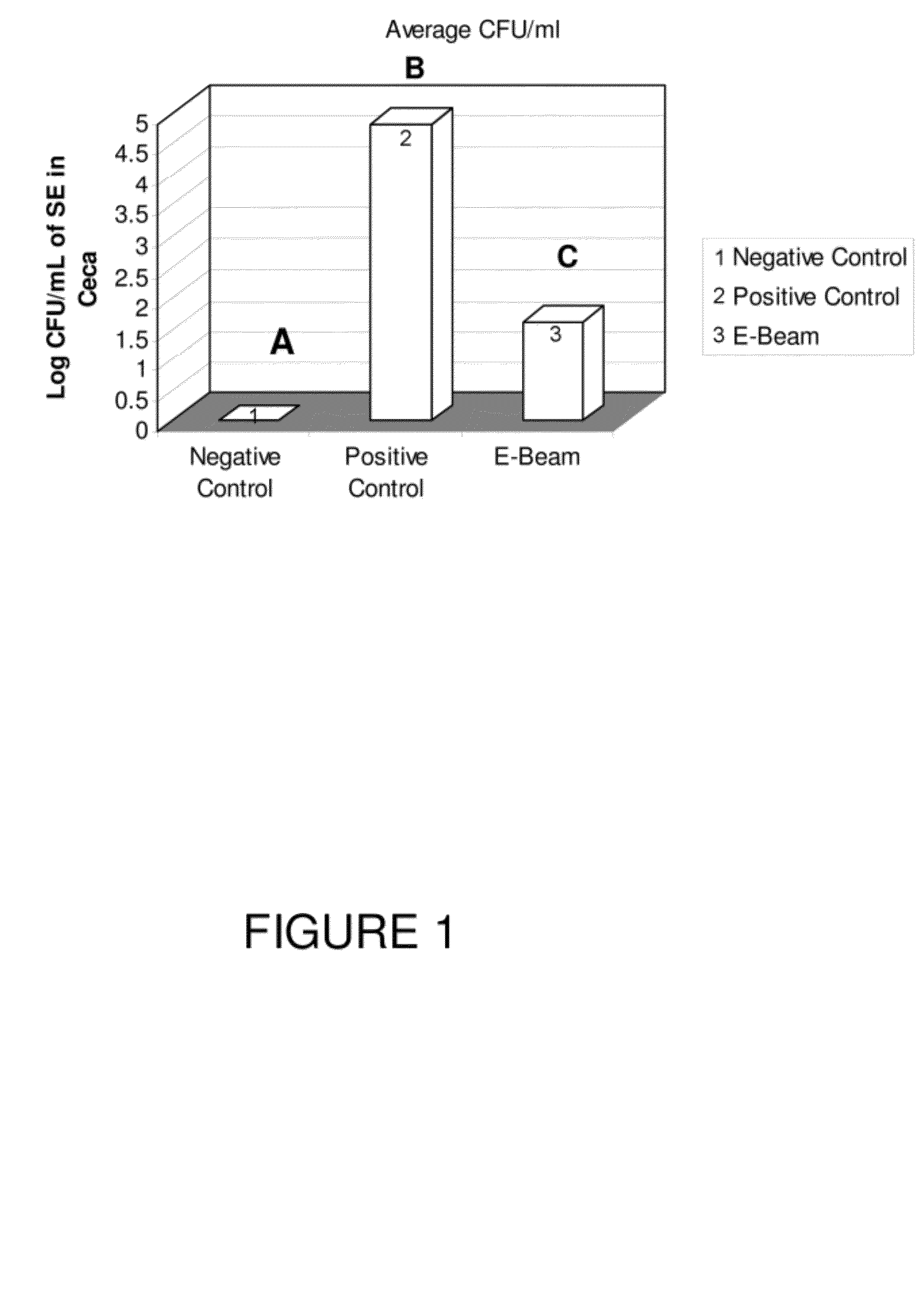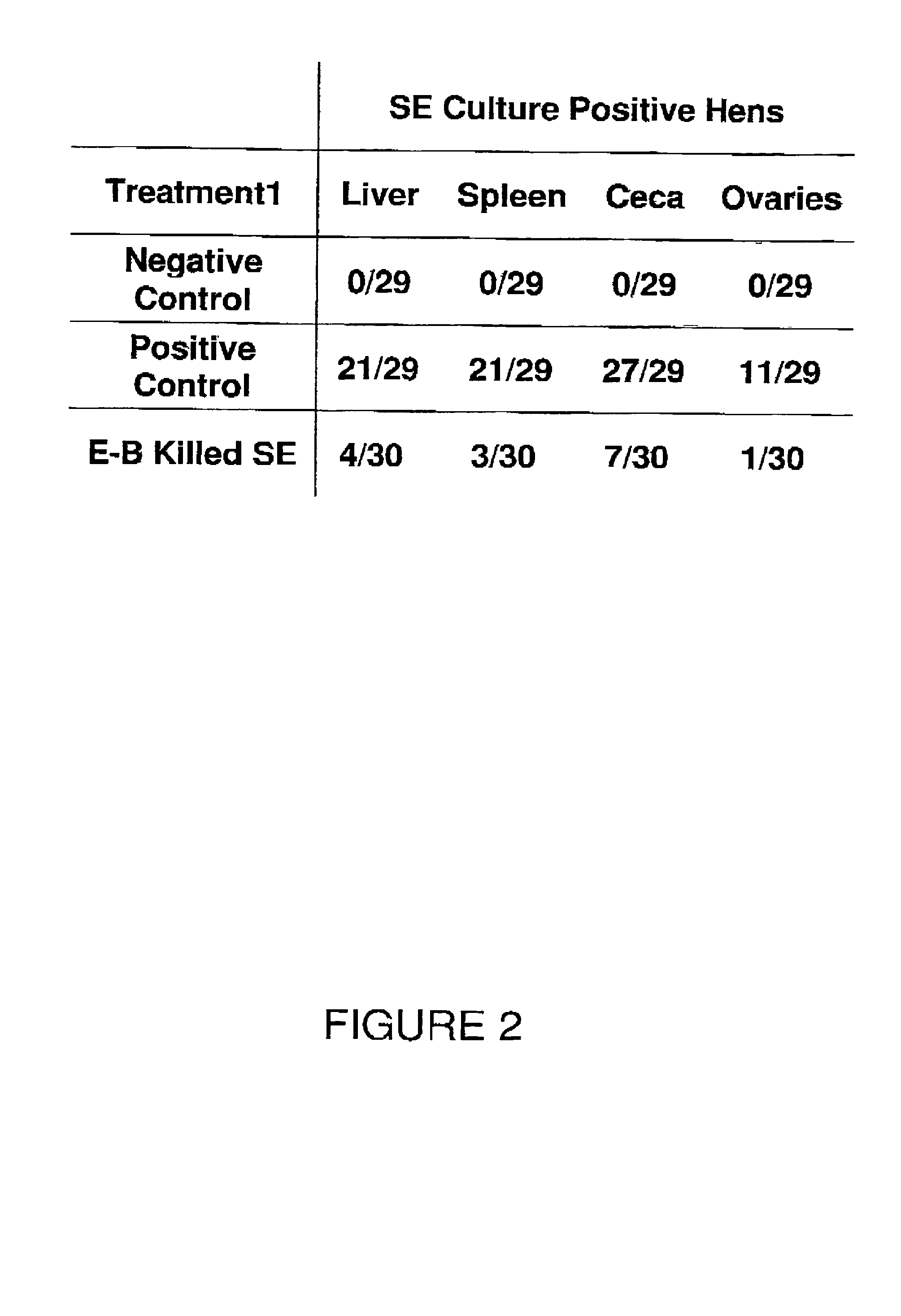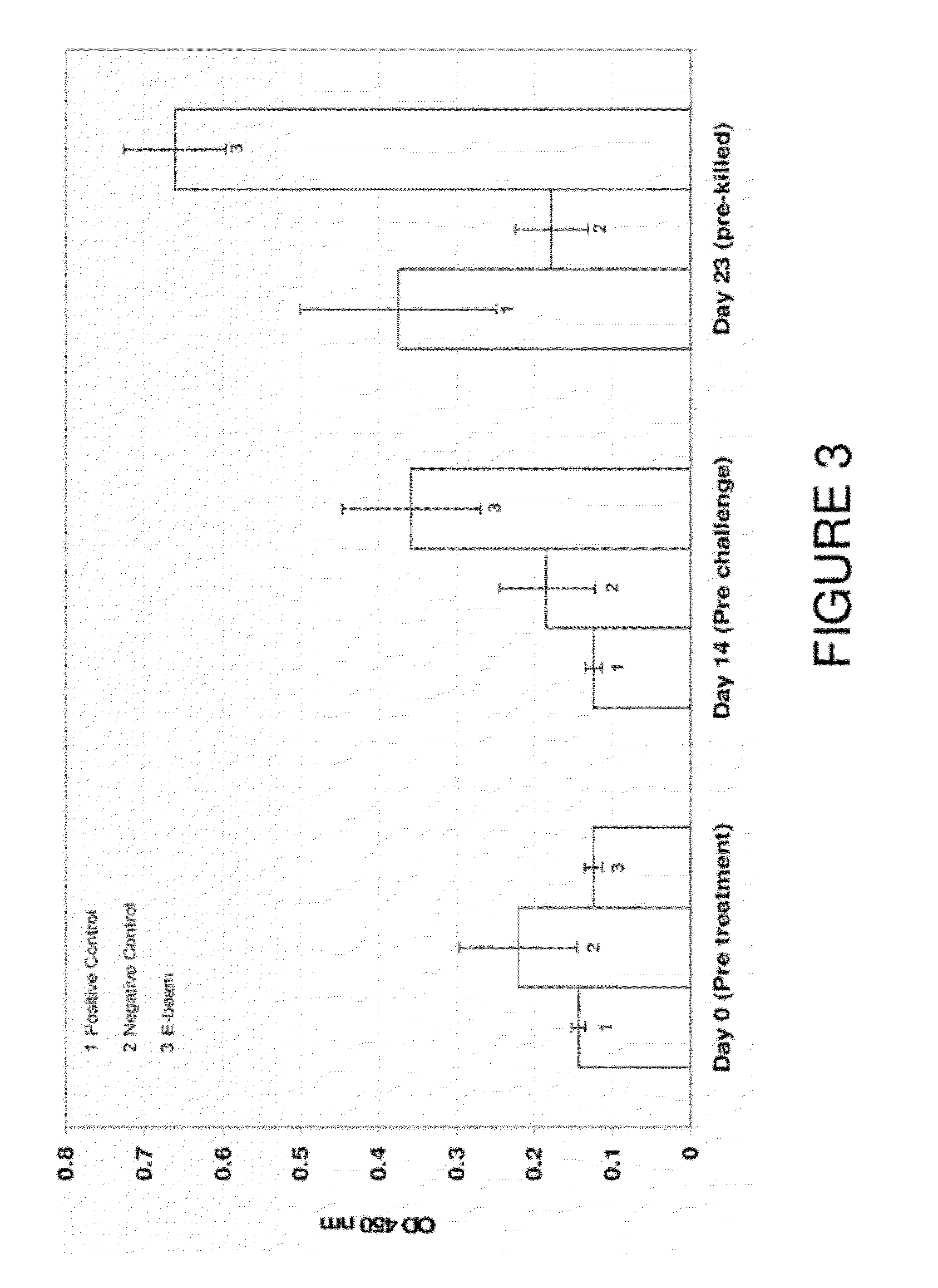High energy electron beam irradiation for the production of immunomodulators in poultry
a technology of immunomodulator and electron beam, which is applied in the direction of snake antigen ingredients, drug compositions, antibody medical ingredients, etc., can solve the problems of few products developed to facilitate such efforts, and significant infections in animals, and achieve the effects of stimulating protective immune responses, controlling or inhibiting salmonella colonization, and reducing salmonella populations
- Summary
- Abstract
- Description
- Claims
- Application Information
AI Technical Summary
Benefits of technology
Problems solved by technology
Method used
Image
Examples
example 1
[0031]A first trial was conducted to assess the effects therapeutic administration (IM) of the electron beam killed cell vaccine in reducing Salmonella enteritidis in laying hens.
Procedures
Preparation of Salmonella enteritidis Cells:
[0032]Salmonella enteritidis (SE) was obtained from USDA / ARS / SPARC / FFSRU. The SE strain was grown in TSB at 37° C. for 18-24 hours. The cells were then maintained and stored on TSA media and grown in 10 mL of TSB for 18-24 hours in a shaker water bath at 37° C. for growth.
Preparation of Irradiated Cells:
[0033]To make the overnight culture, one CFU was taken from the storage plate, put in 10 mL of TSB, and the culture was grown in 37° C. for 18-24 hours. Cells were washed and then resuspended in PBS. The optical density (OD) of the culture was measured and recorded, and adjusted to an OD of 0.5 by serial dilutions. This gave an approximate concentration of 1×106 CFU / mL. This suspension was transported to the High Energy Electron-beam (E-beam) Irradiation ...
example 2
[0075]A second trial was conducted to assess the effects of therapeutic administration (IM and in ovo) of the electron beam killed cell vaccine in protecting neonatal broiler chicks from Salmonella typhimurium (ST). Two experiments were conducted, to quantify the effects of the E beam vaccine (alone and with CPG) in layer chicks and to quantify the effects of the E beam vaccine (alone and with CPG) administered in ovo.
experiment 1
[0076]In the first experiment of the present study, the effects of in ovo E-beamed ST or CPG administration were evaluated to measure heterophil function.
[0077]For this experiment, 400 Single comb White Leghorn (SCWL) embryos on day 18e (day 18 of incubation) were equally divided into four independent treatment groups, see below for treatment groups. Individual groups were placed in separate hatching trays and placed for hatch in the same hatching cabinet to provide identical hatching conditions. On day-of-hatch, the total number of chicks hatched in each treatment group were divided equally, half of the birds were used for heterophil function assays four days post hatch. For the collection of blood samples from chicks in each treatment group, all chicks were bled by decapitation and bled into EDTA tubes. Functional assays included: phagocytosis, degranulation, and oxidative burst activity were measured by the process below.
PUM
| Property | Measurement | Unit |
|---|---|---|
| temperature | aaaaa | aaaaa |
| OD | aaaaa | aaaaa |
| optical OD | aaaaa | aaaaa |
Abstract
Description
Claims
Application Information
 Login to View More
Login to View More - R&D
- Intellectual Property
- Life Sciences
- Materials
- Tech Scout
- Unparalleled Data Quality
- Higher Quality Content
- 60% Fewer Hallucinations
Browse by: Latest US Patents, China's latest patents, Technical Efficacy Thesaurus, Application Domain, Technology Topic, Popular Technical Reports.
© 2025 PatSnap. All rights reserved.Legal|Privacy policy|Modern Slavery Act Transparency Statement|Sitemap|About US| Contact US: help@patsnap.com



